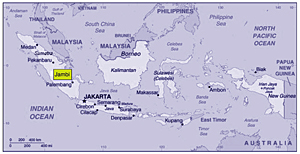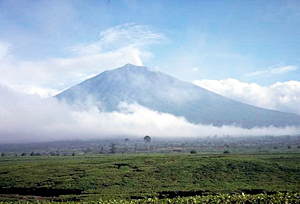
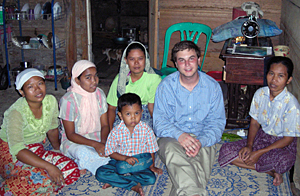
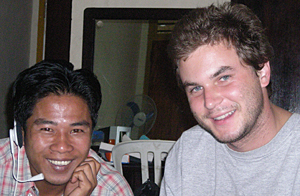
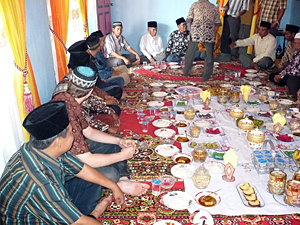
- Rozovsky wins prestigious NSF Early Career Award
- UD students meet alumni, experience 'closing bell' at NYSE
- Newark Police seek assistance in identifying suspects in robbery
- Rivlin says bipartisan budget action, stronger budget rules key to reversing debt
- Stink bugs shouldn't pose problem until late summer
- Gao to honor Placido Domingo in Washington performance
- Adopt-A-Highway project keeps Lewes road clean
- WVUD's Radiothon fundraiser runs April 1-10
- W.D. Snodgrass Symposium to honor Pulitzer winner
- New guide helps cancer patients manage symptoms
- UD in the News, March 25, 2011
- For the Record, March 25, 2011
- Public opinion expert discusses world views of U.S. in Global Agenda series
- Congressional delegation, dean laud Center for Community Research and Service program
- Center for Political Communication sets symposium on politics, entertainment
- Students work to raise funds, awareness of domestic violence
- Equestrian team wins regional championship in Western riding
- Markell, Harker stress importance of agriculture to Delaware's economy
- Carol A. Ammon MBA Case Competition winners announced
- Prof presents blood-clotting studies at Gordon Research Conference
- Sexual Assault Awareness Month events, programs announced
- Stay connected with Sea Grant, CEOE e-newsletter
- A message to UD regarding the tragedy in Japan
- More News >>
- March 31-May 14: REP stages Neil Simon's 'The Good Doctor'
- April 2: Newark plans annual 'wine and dine'
- April 5: Expert perspective on U.S. health care
- April 5: Comedian Ace Guillen to visit Scrounge
- April 6, May 4: School of Nursing sponsors research lecture series
- April 6-May 4: Confucius Institute presents Chinese Film Series on Wednesdays
- April 6: IPCC's Pachauri to discuss sustainable development in DENIN Dialogue Series
- April 7: 'WVUDstock' radiothon concert announced
- April 8: English Language Institute presents 'Arts in Translation'
- April 9: Green and Healthy Living Expo planned at The Bob
- April 9: Center for Political Communication to host Onion editor
- April 10: Alumni Easter Egg-stravaganza planned
- April 11: CDS session to focus on visual assistive technologies
- April 12: T.J. Stiles to speak at UDLA annual dinner
- April 15, 16: Annual UD push lawnmower tune-up scheduled
- April 15, 16: Master Players series presents iMusic 4, China Magpie
- April 15, 16: Delaware Symphony, UD chorus to perform Mahler work
- April 18: Former NFL Coach Bill Cowher featured in UD Speaks
- April 21-24: Sesame Street Live brings Elmo and friends to The Bob
- April 30: Save the date for Ag Day 2011 at UD
- April 30: Symposium to consider 'Frontiers at the Chemistry-Biology Interface'
- April 30-May 1: Relay for Life set at Delaware Field House
- May 4: Delaware Membrane Protein Symposium announced
- May 5: Northwestern University's Leon Keer to deliver Kerr lecture
- May 7: Women's volleyball team to host second annual Spring Fling
- Through May 3: SPPA announces speakers for 10th annual lecture series
- Through May 4: Global Agenda sees U.S. through others' eyes; World Bank president to speak
- Through May 4: 'Research on Race, Ethnicity, Culture' topic of series
- Through May 9: Black American Studies announces lecture series
- Through May 11: 'Challenges in Jewish Culture' lecture series announced
- Through May 11: Area Studies research featured in speaker series
- Through June 5: 'Andy Warhol: Behind the Camera' on view in Old College Gallery
- Through July 15: 'Bodyscapes' on view at Mechanical Hall Gallery
- More What's Happening >>
- UD calendar >>
- Middle States evaluation team on campus April 5
- Phipps named HR Liaison of the Quarter
- Senior wins iPad for participating in assessment study
- April 19: Procurement Services schedules information sessions
- UD Bookstore announces spring break hours
- HealthyU Wellness Program encourages employees to 'Step into Spring'
- April 8-29: Faculty roundtable series considers student engagement
- GRE is changing; learn more at April 15 info session
- April 30: UD Evening with Blue Rocks set for employees
- Morris Library to be open 24/7 during final exams
- More Campus FYI >>
4:26 p.m., May 20, 2009----Timothy McKinnon would cross an ocean, wade through a jungle, and climb a mountain to save an endangered language. In fact, that's what the University of Delaware doctoral student is doing on Sumatra, the largest island in Indonesia.
McKinnon, the recent recipient of a prestigious Fulbright Student Award, is working to document the Malay dialect known as Kerinci (“cur-in-chee”), which is spoken near the foot of Mount Kerinci, an active volcano that is the highest peak in Sumatra.
Nearly every village in this remote region has its own variation of Kerinci even though only a rice field may separate the communities.
“It really is a mystery as to why their languages are so different,” McKinnon says.
The Fulbright award will enable McKinnon to expand his dissertation research on Kerinci to document, describe, and compare key grammatical properties of the language and its many variations. It's been estimated that Kerinci could have as many as 100 unique dialects.
The work will be conducted in affiliation with Atma Jaya University in Jakarta and in consultation with Profs. Gabriella Hermon and Peter Cole, experts on Malay and comparative syntax at UD, and Prof. Uri Tadmor, an expert on Malay and historical phonology at the Max Planck Institute for Evolutionary Anthropology and Atma Jaya University. Tadmor also is an adjunct professor at UD.
Many languages face extinction
Of the more than 6,500 languages in the world, half are on the verge of extinction, according to the National Science Foundation, which helped fund McKinnon's dissertation research.
By the end of this century, it is predicted that 90 percent of the world's languages will be gone. Kerinci increasingly will be threatened, McKinnon says, as transportation to the region improves and speakers come in contact with “high prestige” languages such as standard Indonesian and the trade language of Minangkabau, taboos restricting inter-village marriage begin to disappear, and traditional dialects are no longer taught to children.
“Many languages will disappear inevitably,” McKinnon says. “I think documenting oral literature, having a cultural record, is important. Linguistics looks at these dialects and how they are structured, giving a richer picture of human language and how it works.”
McKinnon has long been intrigued by language. He took Navajo in high school in Arizona. Then he studied Polish at the University of Wisconsin. The quality of the linguistics program at the University of Delaware lured him to grad school here although he did not know what aspect of language he wanted to study.
Then he worked on a transformation grant project, through a program established by Tom Apple, dean of the College of Arts and Sciences, to help students “find their passion” in research, teaching, or service.
The grant paid for McKinnon's first trip to Sumatra in late 2006.
“It was a real culture shock,” McKinnon says, “but the people are very hospitable and welcoming. They are very kind immediately,” he notes.
Getting to his field research location took six hours by bus from Jambi City, then a couple of hours “off the beaten path” on a motorcycle taxi to the village of Sarolangun.
McKinnon worked with native speakers to record villagers' jokes and stories and found “incredible differences” in the way speakers form words from sounds and form sentences from words.
To get a clear sense of the variations, McKinnon and Heri Mudra, a student at Jambi University, developed an alphabet for the language and transcribed villagers' jokes and stories into a database at the Max Planck Institute's Jakarta Field Station, which was developed in part by the University of Delaware. Access to the database will be made available to local schools and universities, as well as scholars worldwide.
A goal of the research, McKinnon says, is to engage local students in the project. Mudra, earned his bachelor's and is now pursuing a master's degree in linguistics.
“As a linguist, you develop a hypothesis about the structure of the language. You elicit data, probe the language, and preserve the oral text using a high-quality digital recording device,” McKinnon notes. “By developing a database of these stories and jokes, we can measure the properties of the sounds and test grammatical hypotheses.”
A fascinating culture
McKinnon says that some of the most interesting stories told by the Kerinci speakers are about “the tigers” that live in the mountains.
“They're not really tigers, but more like supernatural beings,” McKinnon explains. “It's said that if you are in distress and smoke a sugar palm cigarette, the tigers will come help you.”
McKinnon has great affection for the Indonesian people and says he would “love to continue on with this in the future, to do research on the Malay language.”
He has especially fond memories of a trip he made to Kerinci at the end of the Muslim holiday of Ramadan.
“It was the biggest party I've ever seen,” McKinnon says. “This is a culture that emphasizes food, socializing, and family. We went to eight or nine different houses and ate insanely beautiful assortments of meat, vegetables from local gardens, and fruit from orchards in the mountains.”
Eel is now one of McKinnon's favorite foods. The fish, which burrow into the mud of the flooded rice fields, are caught, salted, cooked, and put in chile sauce.
Besides sitting on the floor to eat, as is the custom, McKinnon adapted to bathing by dipping ladles of water from a large tank and pouring them over himself.
“To give you some idea of how clean the water was in the house where I stayed,” McKinnon says, “I happened to look down in the tank and saw this huge fish. It was pretty cool.”
A few days later, McKinnon noticed that the fish was gone. That night, fish was for dinner.
Article by Tracey Bryant



